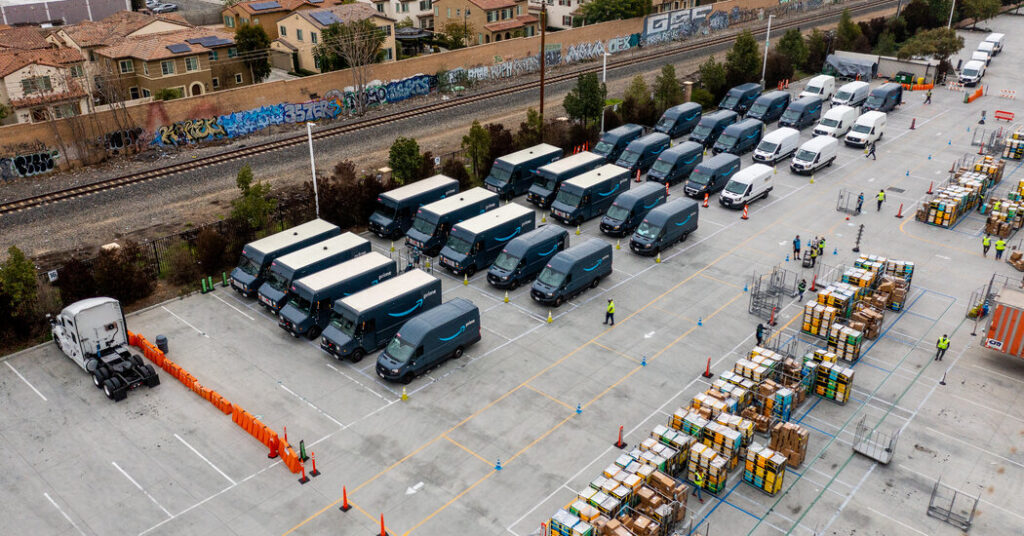
An improving economy and a persistent virus are beginning to weigh on Amazon’s retail business, even as its cloud computing business grew and an investment lifted profits.
The company, whose profits, employee count and share price swelled two years ago as Covid forced people to stay home, said on Thursday that its operating income in the fourth quarter tumbled to $3.5 billion, about half the $6.9 billion it earned in the fourth quarter of 2020.
To compensate for its increased costs, Amazon said it was raising the annual price of its Prime shipping club to $139, from $119. The company said the 17 percent hike was the first Prime increase since 2018.
“As expected over the holidays, we saw higher costs driven by labor supply shortages and inflationary pressures, and these issues persisted into the first quarter due to omicron,” Andy Jassy, Amazon’s chief executive, said in a statement.
Net income, however, rose sharply owing to what Amazon called a “pretax valuation gain” in Rivian Automotive, an Amazon investment that went public in the fourth quarter. Amazon owns about 20 percent of the electric vehicle maker.
That pushed up net income to $14.3 billion compared with $7.2 billion a year ago. Without Rivian, net income would have slid to $2.5 billion, the company said. Revenue rose to a record $137.4 billion, just slightly under what analysts were expecting.
Amazon controls about 40 percent of the e-commerce market but that business — the one it began with and is still best known for — is increasingly the weakest part of the company. Online retail sales were essentially flat in the fourth quarter from 2020.
“Growth is slowing, there is no doubt,” Tom Johnson, global chief digital officer at Mindshare Worldwide, said in a note. “Comparisons against hyper growth quarters from early in the pandemic, supply chain issues that have a knock-on impact on ad spend, and continuing additional costs all add up the conclusion that the accelerated period of growth is over.”
AWS, Amazon’s cloud division, racked up its usual impressive performance, with operating income rising 49 percent. Ad revenue was $9 billion, up 37 percent. Twitter, which makes the vast majority of its revenue from advertising, has by comparison annual sales of less than $5 billion.
During regular trading Thursday, as investors fretted over what was to come, Amazon shares fell 8 percent. But after the earnings release appeared, investors focused on the good news, quickly pushing up Amazon shares in after-hours trading about 17 percent before beginning to fall back.
Andrew Lipsman, principal analyst at the research firm Insider Intelligence, attributed Wall Street’s optimism to two things.
“There was the price increase for Prime membership and the continued acceleration in AWS growth and its growing impact on the bottom line,” he said. “Perhaps there’s also some forgiveness of the e-commerce deceleration given the extraordinarily challenging year-ago comparisons to Q4 2020.”
Amazon added 140,000 workers during the quarter, giving it a total of 1.6 million employees. That was up 24 percent in a year. Walmart, the largest nongovernment U.S. employer, has 2.2 million workers.
You may also like
-
Why an All-In-One Payment Platform is a Must for Modern Salons & Spas | Quantum ePay
-
Judge: Musk must testify in SEC Twitter probe
-
20 Questions with Technologist and Entrepreneurial Inventor, Dennis Fountaine
-
Another Swedish union joins strike against Tesla
-
Revolutionizing Sustainable Technology: Breakthrough Nanogenerator Poised to Transform Renewable Energy, Healthcare Monitoring, and Consumer Electronics

